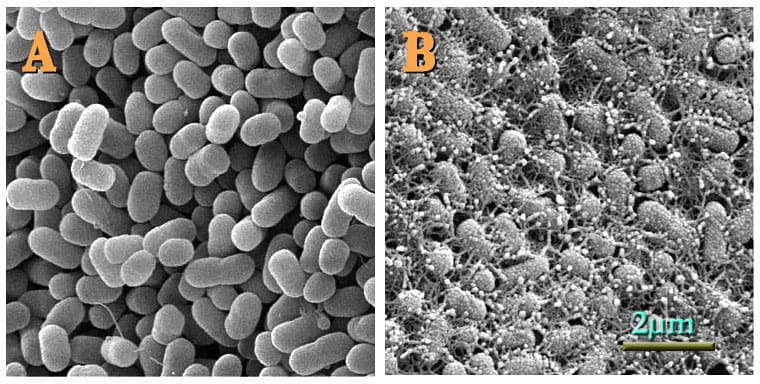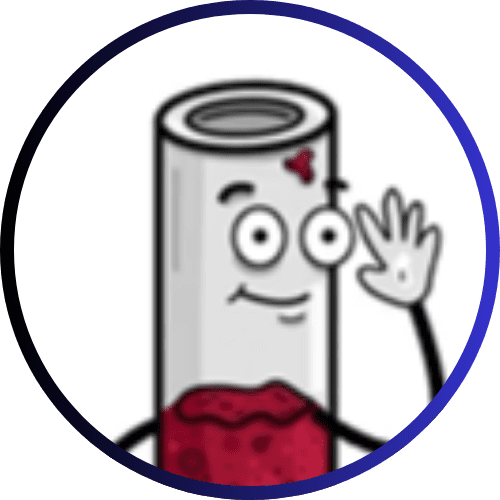MedLab guide: How to protect your children from EHEC
Enterohaemorrhagic Escherichia coli (EHEC) are bacteria that can cause serious intestinal infections. Children in particular are at risk due to their still developing immune system. Infection usually occurs via contaminated food, water or direct contact with infected persons or animals. Symptoms range from abdominal cramps and diarrhea to serious complications such as hemolytic uremic syndrome (HUS), which can cause kidney damage. This guide offers medically sound measures to protect children as well as possible from an EHEC infection.

1. Consistently implement hygiene
Hand hygiene is the most important measure to prevent EHEC. Children should learn to wash their hands regularly and thoroughly with soap, especially before eating, after going to the toilet and after contact with animals or soil. Parents should make sure that hand washing takes at least 20 seconds and that all areas of the hands, including the spaces between the fingers, are cleaned. Disinfectants should be available in public facilities such as kindergartens or schools if soap and water are not available.
Surfaces that come into contact with food or excrement, such as kitchen countertops or changing tables, should be cleaned and disinfected regularly. Toys that children could put in their mouths should also be kept clean to prevent the transmission of germs.
2. Ensure food safety
EHEC is often transmitted through the consumption of raw or undercooked meat, unpasteurised dairy products, contaminated water or raw vegetables. To protect children, parents should take the following precautions:
- Cook meat thoroughly: Meat dishes, especially minced meat, should be cooked through (core temperature at least 70 ┬░C for two minutes) to kill bacteria. A meat thermometer helps to check the temperature.
- Avoid raw milk products: Children should not consume unpasteurized milk or cheese, as they carry a high risk of infection.
- Wash vegetables and fruit thoroughly: Fresh vegetables, especially lettuce, sprouts or cucumbers, should be cleaned under running water. Peeling fruit and vegetables further reduces the risk.
- Prevent cross-contamination: Raw foods such as meat should be stored and processed separately from other foods. Use separate cutting boards and knives for raw meat and vegetables.
3. Ensure drinking water quality
Contaminated drinking water is a common transmission route for EHEC, especially in regions with uncertain water quality. Parents should ensure that children only consume clean, tested drinking water. When traveling or traveling to areas with questionable water quality, bottled water or boiled water is preferred. Water from wells or untreated springs should be avoided.
4. Control contact with animals and the environment
EHEC can be transmitted through contact with farm animals such as cattle, goats or sheep, as these animals can be carriers of the bacteria. Visits to farms, petting zoos or similar facilities require special caution:
- Children should wash their hands immediately after contact with animals or their surroundings (e.g. stable floors).
- Avoid eating and drinking near animals to prevent transmission from soiled hands or surfaces.
- Shoes and clothing that have come into contact with soil or animal excrement should be cleaned before entering the house.
Contact with contaminated soil, for example when playing in the garden, also poses risks. Children should not eat with unwashed hands or put objects in their mouths.
5. Early detection and response
Parents should be aware of the symptoms of an EHEC infection in order to be able to act quickly. Typical signs are watery or bloody diarrhea, abdominal cramps, nausea and fever. If an infection is suspected, a visit to the doctor is necessary immediately, especially in children, as the risk of HUS is high. Until diagnosis, affected children should be isolated to prevent further spread of the bacteria, for example in kindergartens or schools.
Medical diagnostics usually include stool sample analyses to detect EHEC. Early treatment, often through supportive measures such as hydration, can mitigate complications. Antibiotics are usually not used for EHEC infections because they can increase the risk of HUS.
6. Education and prevention in everyday life
Parents should educate children about hygiene and food safety in an age-appropriate way. Simple rules such as “wash your hands before eating” or “don’t try raw meat” can be taught in a playful way. In community facilities such as kindergartens, parents should talk to educators to ensure that hygiene measures are observed. In the event of outbreaks of EHEC in the region, parents should be particularly vigilant and pay attention to official warnings, for example about contaminated food.
Conclusion
Protection against EHEC requires consistent hygiene, careful food processing and mindfulness during outdoor activities. Through simple but consistent measures, parents can significantly reduce the risk of infection for their children. Early education and quick action in case of symptoms are crucial to avoid serious complications. With these steps, parents are helping to protect their children’s health and contain the spread of EHEC.
Disclaimer: The recommended measures do not represent 100 percent protection against EHEC. Therefore, always consult a doctor if your child has the first symptoms or feeling unwell.
Editor: X-Press Journalistenb├╝ro GbR
Gender Notice. The personal designations used in this text always refer equally to female, male and diverse persons. Double/triple naming and gendered designations are used for better readability. ected.




